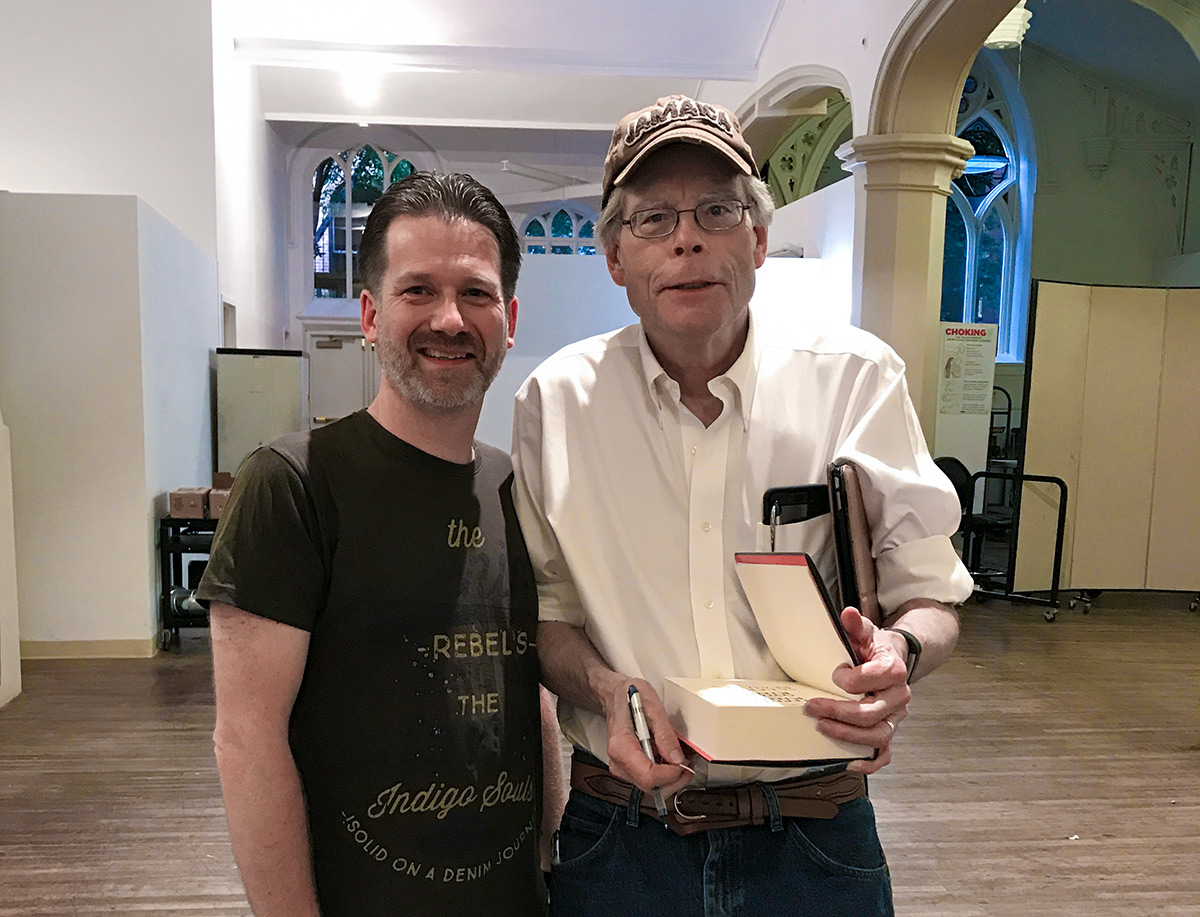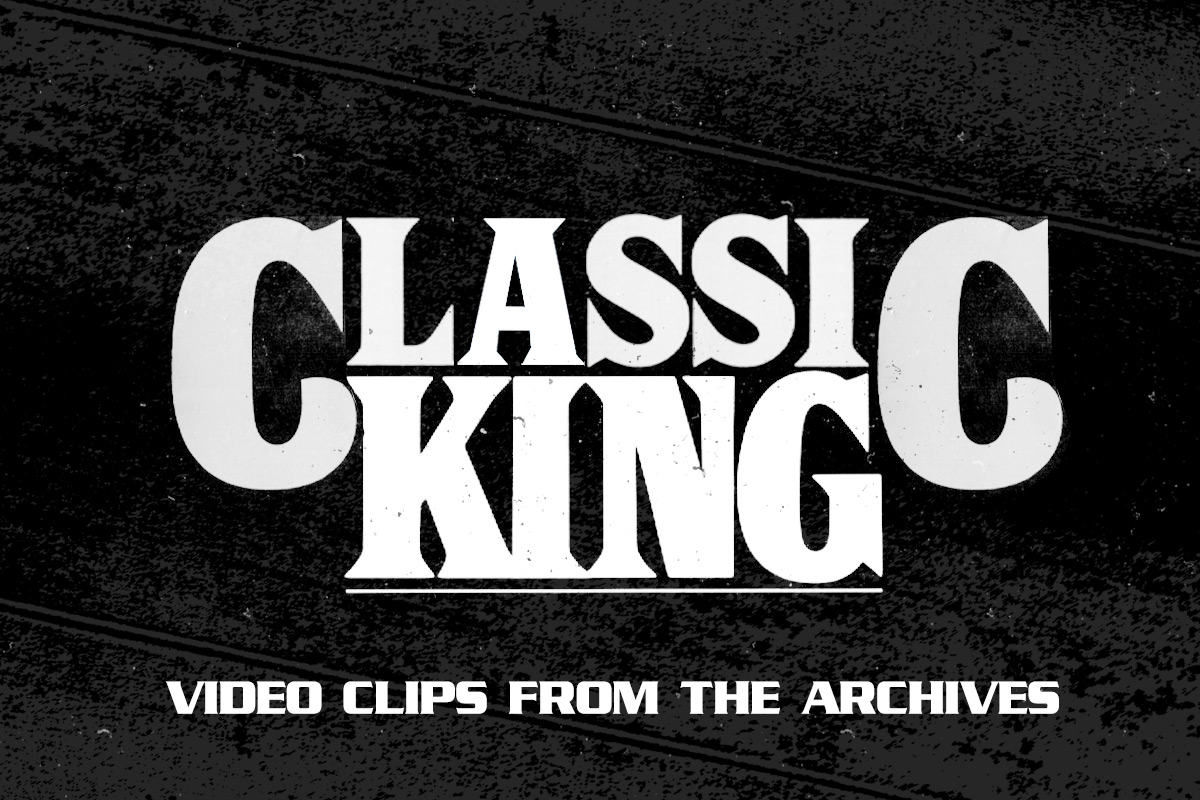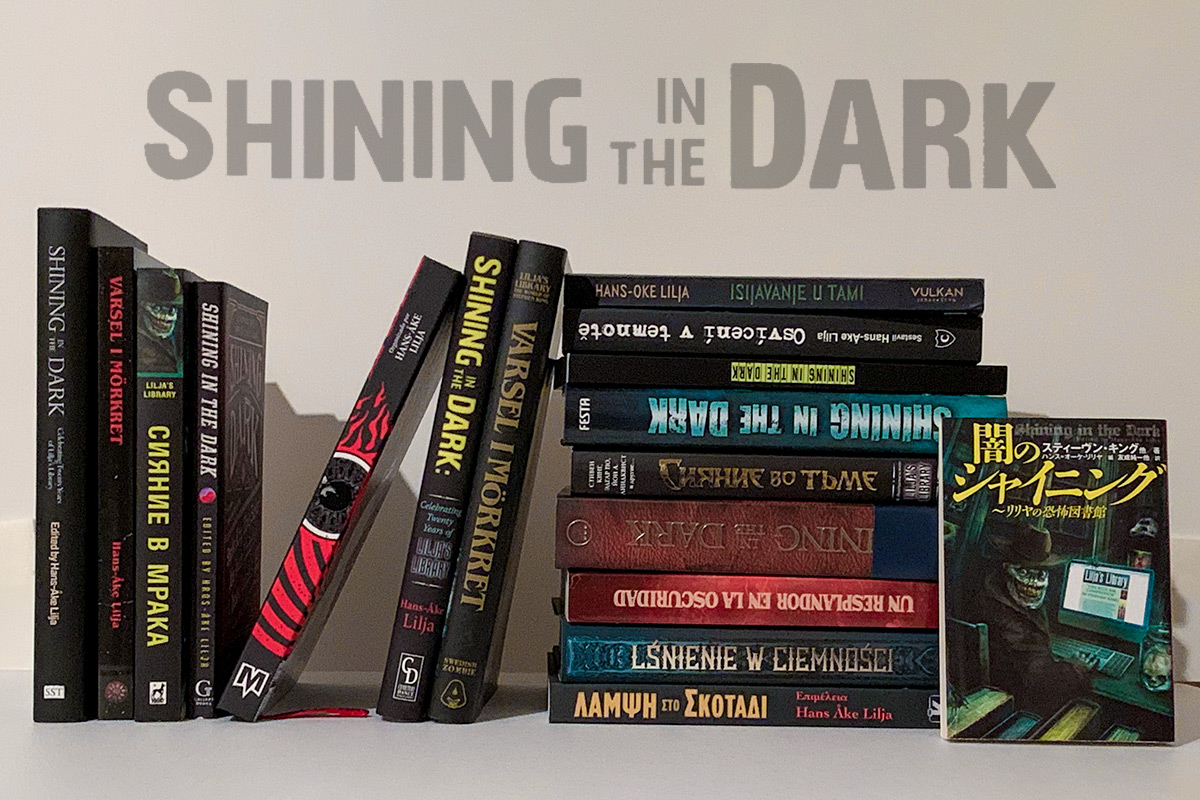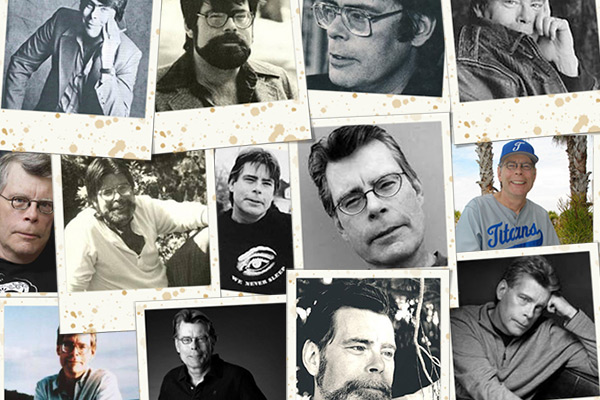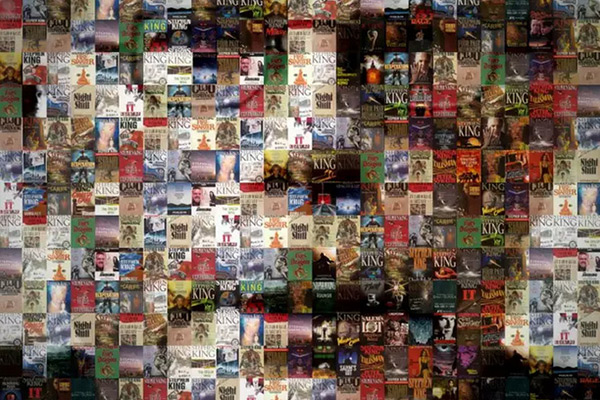Robin Furth
Posted: October 19, 2009
_
 Many of you know Robin Furth already since she is the woman behind a lot of comics based on King’s work. This week the first issue of The Talisman hits comic stores all over and I got a chance to talk to Robin about her work on that one and The Dark Tower comic. Here is what she had to say.
Many of you know Robin Furth already since she is the woman behind a lot of comics based on King’s work. This week the first issue of The Talisman hits comic stores all over and I got a chance to talk to Robin about her work on that one and The Dark Tower comic. Here is what she had to say.Lilja: I suspect you’re quite busy these days with all the Stephen King books turned into comics.
Robin Furth: Yes, I am pretty busy! Right now I’m working on both the Dark Tower comics for Marvel and The Talisman comics for Del Rey. I’m also doing some work for the Stephen King website, which means that life can sometimes feel a bit like a juggling act. But at the same time I wouldn’t change things, since I’m making a living doing what I love most. The only odd part is that I’m spending so much time in parallel universes that this reality can sometimes get lost in the shuffle. I have a perfectly clear memory for everything that happens in Mid-World or the Territories, but when it comes to something I did in this world last month or last year . . . the memory is vague! My husband finds this very amusing, but I’m getting a little worried about myself.
Lilja: You have worked with The Dark Tower comics for some time now, how did you end up working with The Talisman?
Robin Furth: I’m a huge Talisman fan and I feel quite a personal connection to the novel. So when I heard from Ralph Vicinanza that Del Rey was hoping to do a graphic novel version of the book, I really wanted to be involved. While working on my Dark Tower Concordance, I found myself returning to Talisman quite frequently. Although Mid-World and the Territories are very different worlds, I feel that Talisman had quite a profound affect upon the later Dark Tower novels. (If you check the copyright dates, you’ll see that The Talisman was published in 1984. That places it after The Gunslinger but before The Drawing of the Three.) In turn, Mid-World has had a very direct connection to The Talisman’s sequel, Black House. (For those out there who haven’t yet read Black House, I won’t spoil the surprise!)
As far as other connections to Talisman go, while Steve King and Peter Straub were working on Black House, I actually got the chance to contribute a little bit of research. You know all those headlines about Albert Fish which you see at the end of Black House? Well, I spent several days in the New York Public Library archives finding them!
As well as being a fan of The Talisman’s storyline, I also feel a profound connection to Jack Sawyer. When I was about Jack’s age, my mother had to have surgery on her colon to remove polyps, one of which was cancerous. Hence, when I was very young I too had to face the terror of my mother’s mortality. And though I was lucky in that my mom recovered all on her own, if somebody had told me that I had to cross an entire continent—and two worlds—to make her better, I would have undertaken the journey.
Lilja: What is the biggest difference between writing the script for The Talisman and The Dark Tower if any?
Robin Furth: In terms of plotting, the biggest difference between Dark Tower and Talisman is that in The Talisman, approximately the first eighteen comics will be a direct adaptation of the original, whereas in Dark Tower, only the first seven comics—the ones that comprise The Gunslinger Born—were adapted from an actual Dark Tower book. (As you know, Gunslinger Born is an adaptation of Wizard and Glass.) Another difference is that, although The Gunslinger Born was adapted from a novel, the novel from which it was adapted is actually fourth in a seven novel series. Hence, while I was condensing the plot for Gunslinger Born I had to slip in scenes that would help new readers catch up on information that fans of the books already knew. So my Wizard and Glass adaptation contains bits of The Gunslinger too!
 Since I have eighteen comics in which to tell the story of The Talisman, I have a lot more room to expand, which is great. Although moving from words to visuals always requires some plot condensation, in Gunslinger Born I had to condense about 600 pages of story into seven comics of approximately 22-24 pages each. In The Talisman, I have about 430 illustrated pages for approximately 700 pages of original text. Although I’ll still have to condense, it means I can include a lot more of the original, which is wonderful. That means fans of the original novel will (hopefully!) see all their favorite scenes fully illustrated.
Since I have eighteen comics in which to tell the story of The Talisman, I have a lot more room to expand, which is great. Although moving from words to visuals always requires some plot condensation, in Gunslinger Born I had to condense about 600 pages of story into seven comics of approximately 22-24 pages each. In The Talisman, I have about 430 illustrated pages for approximately 700 pages of original text. Although I’ll still have to condense, it means I can include a lot more of the original, which is wonderful. That means fans of the original novel will (hopefully!) see all their favorite scenes fully illustrated.Another REALLY big difference is that in The Talisman, I’m scripting as well as plotting. In the Dark Tower comics, I write the detailed plot outlines then either Jae Lee or Richard Isanove break the story into pages and panels. After that, the story goes to Peter David who writes the dialogue that you read on the page. But in The Talisman, I’m doing plotting as well as dialogue. That means I’m responsible for breaking the story into individual panels and then writing the dialogue that will appear in each panel. As far as page breakdown goes (in other words, which panels appear on which pages), the editors Betsy Mitchell and Trisha Narwani work really hard to make sure that the visual pacing is dynamic.
Lilja: Since they are from almost the same universe, is there any chance we’ll see a crossover from characters in one comic to the other?
Robin Furth: Not yet! In Black House we do witness a direct crossover from Mid-World to the Territories, but since that doesn’t happen in The Talisman, for now the two worlds remain discreet. (Sorry!)
Lilja: I read that the plan is to do about 18 issues of The Talisman, do you think that will be enough to tell the story or have you been forced to cut parts of it out?
Robin Furth: There are always pieces that have to be condensed or (occasionally) cut, but I’m doing my best to include everything I can. As I said before, I’m a real fan of the book, so cutting sections always breaks my heart. But as Betsy Mitchell always reminds me, cutting scenes can sometimes increase the story’s pace and make the action more exciting, so cutting isn’t always a bad thing. As I’ve realized over and over, telling a story visually is often very different from telling it in words. Everything has to be shown rather than told, so there are times when Tony and I can fit a lot of background story into the setting, which means careful readers will be able to tell a lot just from the visuals.
Lilja: You also write a lot of back-story for The Dark Tower, will there be stuff like that in The Talisman as well?
Robin Furth: Oh yes. Those articles are always a lot of fun!
Lilja: The Talisman is a direct translation from the book if I understand correct. Is that easier or harder compared to doing new material like you are with the new Dark Tower stuff?
Robin Furth: It’s a bit of both! Spinning a tale from hints in the original books—as I’ve done with Dark Tower—is terrific fun, but it’s also terrifying. There’s always the chance that I’m going to do something that the original author doesn’t want me to do! I have to watch where I’m going every step of the way. On the other hand, when I’m adapting a novel directly—as I did with Gunslinger Born and as I’m presently doing with The Talisman—I can lose myself in the original tale and blissfully float away into that alternative universe.
But condensing has its own difficulties. It means going through the original novel and choosing which scenes are most central to the forward momentum of the plot, and which scenes are most poignant. In the end, even when you condense you have to be prepared to do a little bit of spinning in order to fill in the gaps. When you have to cut a large section of a novel, you have to make sure that any significant information given in that section is somehow still communicated to the reader, otherwise you can land yourself in trouble.
In both cases—either in straight adaptations or in creative extensions—you have to do a lot of visualization. It’s amazing how many visual details are left out of novels, but which our imaginations supply when we read. For example, when Jack Sawyer goes to the Oatley Tap and is interviewed by the extremely nasty Smokey Updike, what color is the seat that Smokey is sitting on? What is Jack doing with his hands? When I do my scripts, I try to supply visual details which Tony can run with—details which will conjure the wonderful atmosphere of the book. For example, the Talisman chapter where Jack becomes a prisoner in the Oatley Tap is entitled “Jack in the Pitcher Plant.” Since I really wanted to give a visual parallel to this pitcher plant idea, I translated it to a visual image which would, on the one hand, appear realistic but which would also work in terms of metaphor. In the Oatley Tap scene, where Jack meets the cruel and deceitful Smokey Updike, we see a strip of flypaper dangling near Smokey’s head. Buzzing around Smokey is a little fly. (Smokey is like the flypaper, Jack is like the fly.) At the end of the scene, when Jack takes the job, we see that little fly go SPLAT, right onto the paper . . . .
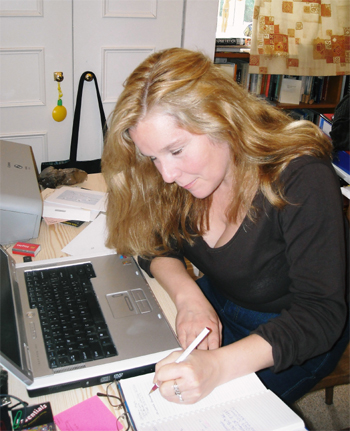 Lilja: There is an issue #0, tell me about that? How did that happen and why?
Lilja: There is an issue #0, tell me about that? How did that happen and why?Robin Furth: When I first started the Talisman project, Betsy Mitchell told me that Del Rey wanted us to create a 16 page Talisman comic book that could be handed out at the San Diego Comic Book Convention. They wanted us to create a prequel to the novel, one which would interest new readers in our project. The story had to be directly relevant to The Talisman’s characters and plot, but it also had to be a tale that took place before the events of the actual novel. Anyway, Betsy and I agreed that it would be great to tell the story of Phil Sawyer’s death. (Phil Sawyer was the father of our hero, Jack Sawyer, but unfortunately he died under suspicious circumstances when Jack was six.) Phil Sawyer’s death is a hugely important event (I won’t say why here, since it will be a spoiler for anybody who hasn’t read the book!), and its significance resonates throughout two worlds—ours and the Territories. Anyway, Betsy and I both thought that making Phil’s death into a separate comic book would (hopefully) interest readers in our story and provide them with important background information for the series. I hope it accomplished at least a little of this!
Lilja: So, what’s next for you? Planning to turn any other Stephen King books into comics?
Robin Furth: That would be great! I have my hands full at the moment, but I’d love to do more!
Lilja: If you could pick any book by Stephen King to turn into a comic, which would it be and
Robin Furth: I would love to do The Eyes of the Dragon and I’d also LOVE to do The Shining. In both cases it’s the fantasy/supernatural element that draws me. (Pardon the pun!) But the list is really endless. I think that Insomnia would be a lot of fun too. And what about Bag of Bones or Lisey’s Story? Steve’s short stories would make a fantastic collection of illustrated tales too. And, of course, I would always cheer for the original Dark Tower novels to become comics. So, you name the book. I’m game!
Lilja: Thanks Robin. It’s always a pleasure to talk to you!

